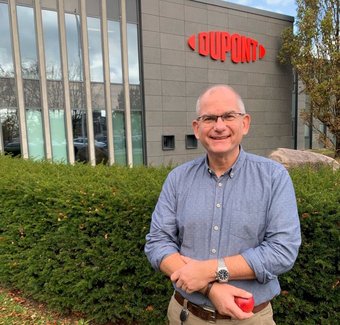How can food products be made better using nature's own plant-based fats, and can food be optimised with ingredients from seaweed, for example? Businesses can find answers to these questions and many more at Aarhus University. This is because the university has northern Europe's largest NMR spectrometer, which can investigate food, medicines and materials right down to atomic level.
The structure of molecules and their interaction with their surroundings is no longer a secret. The Interdisciplinary Nanoscience Center (iNANO) at Aarhus University is the proud owner of Northern Europe’s largest NMR spectrometer, which uses an enormous magnet to reach a resonance frequency of 950 MHz. This means that companies can obtain a much more detailed analysis of their products than before.
There has been great interest in using the NMR spectrometer, says Professor Thomas Vosegaard, who is responsible for the Danish Centre for Ultrahigh Field NMR Spectroscopy. DuPont Danmark is just one of the companies that has made use of the university's NMR spectrometer. Among other things, the company has studied the composition of natural, plant-based fats to understand how food can get the right texture and how oil and water separate in a product, says Henrik Max Jensen, Dupont’s senior researcher.
- We get very accurate measurements from the university's NMR spectrometer, and this provides an understanding of the interactions in food products, so that we can improve the quality and produce better products for our consumers, he explains.
The giant magnet is four metres high, weighs seven tonnes, and has a magnetic field equivalent to approx. 500,000-times the magnetic field of the Earth. This strong magnetic field means that the measurements are extremely accurate, and this is good for researchers and companies.
DuPont Denmark has its own NMR spectrometer, but with a less strong magnetic field, so the company uses the university's magnet from time to time.
- We can see many more atomic details on the university's NMR spectrometer than on our own, and the university's technology helps us to understand far better the complexity of food products, so we can find better solutions more quickly for the food industry. The magnetic field in the NMR spectrometer means our results are closer to reality, explains Henrik Max Jensen.

The samples examined in the giant magnet, are quite small. They are placed in the spectrometer via a small opening at the top, from where the sample is guided down to the centre of the magnet.
Different types of molecules and their structure can be studied by analysing the interaction between the strong magnetic field and the nuclear spin of the atoms. DuPont uses this to improve food products, explains Henrik Max Jensen.
- We must give the food industry – and thus consumers – exactly what they want, and this includes using plant-based raw materials to replace meat, he says.
The university can also help companies such as DuPont with advice and help with simulation, and this is one of the bonuses that Henrik Max Jensen highlights in their collaboration with the research facility.
- They know a lot about NMR at iNANO; its challenges and signals. They’re experts and they can develop a great deal. It's a really good way of bringing new knowledge into a company, and I can definitely recommend other companies to see whether they can use the 950 MHz, he says.
Aarhus University has several NMR spectrometers that companies can use. They cover resonance frequencies from 300 MHz to 950 MHz, and companies can collaborate with researchers or buy access to a spectrometer.